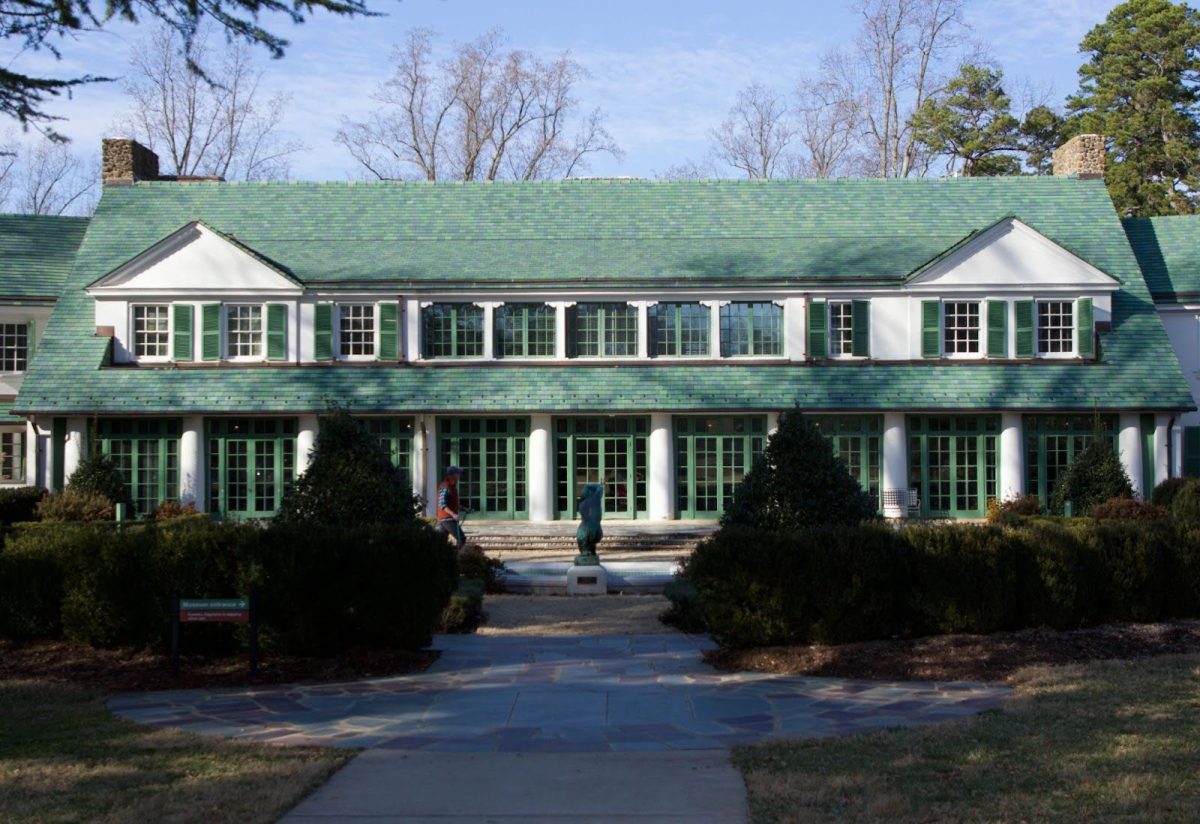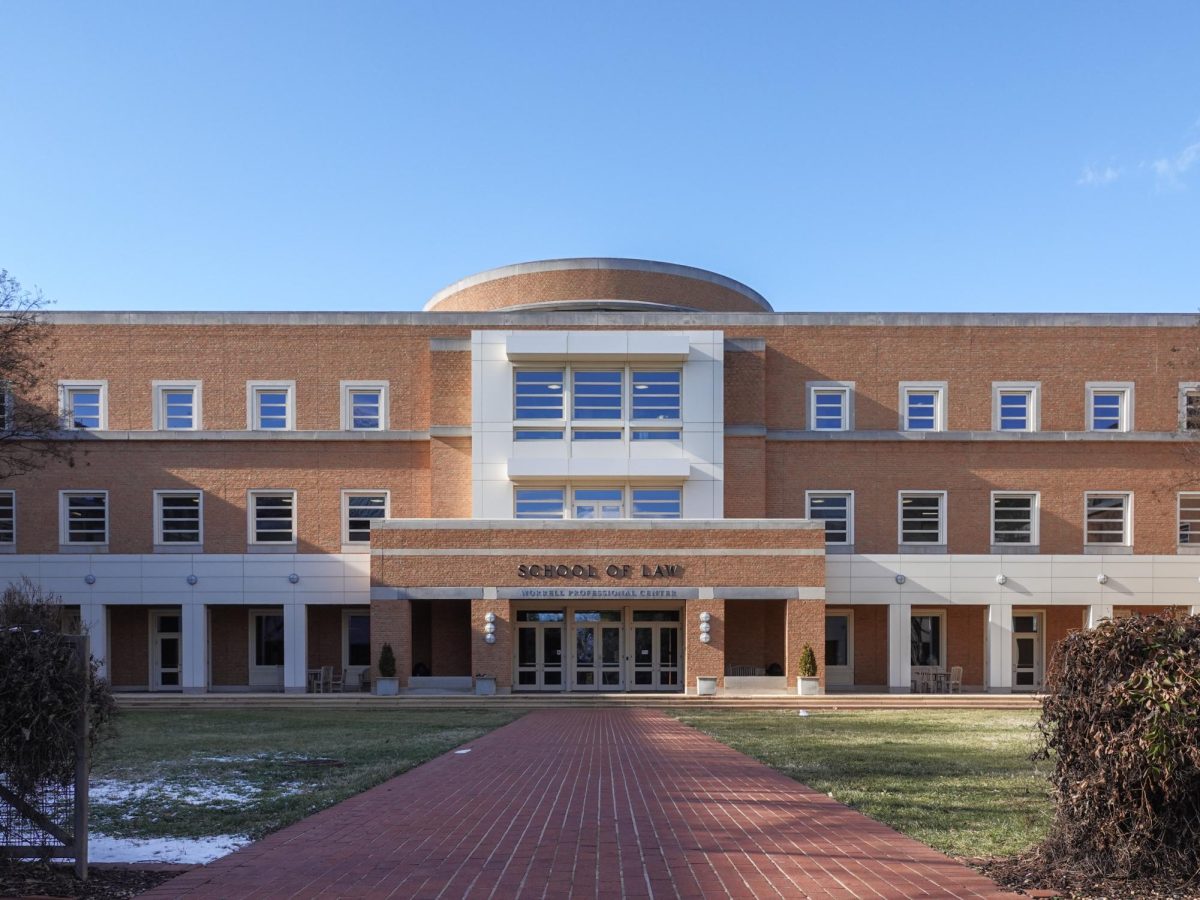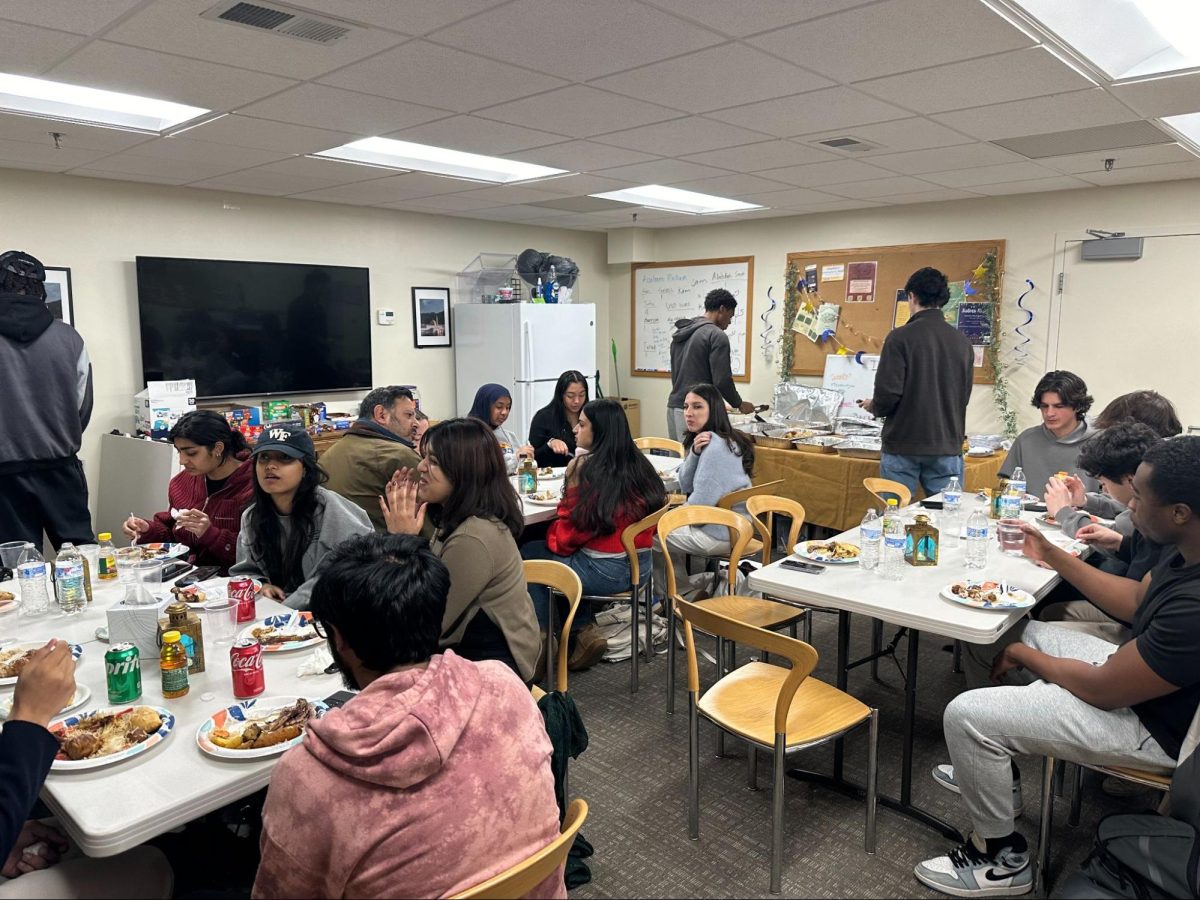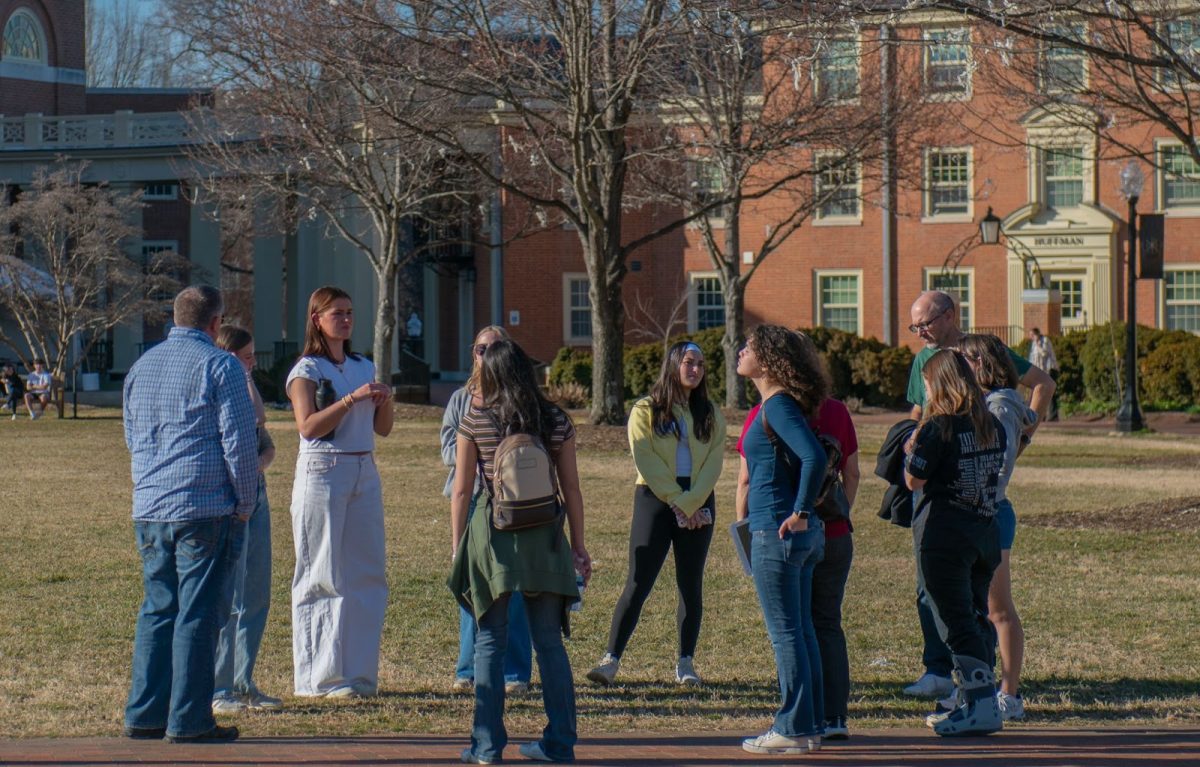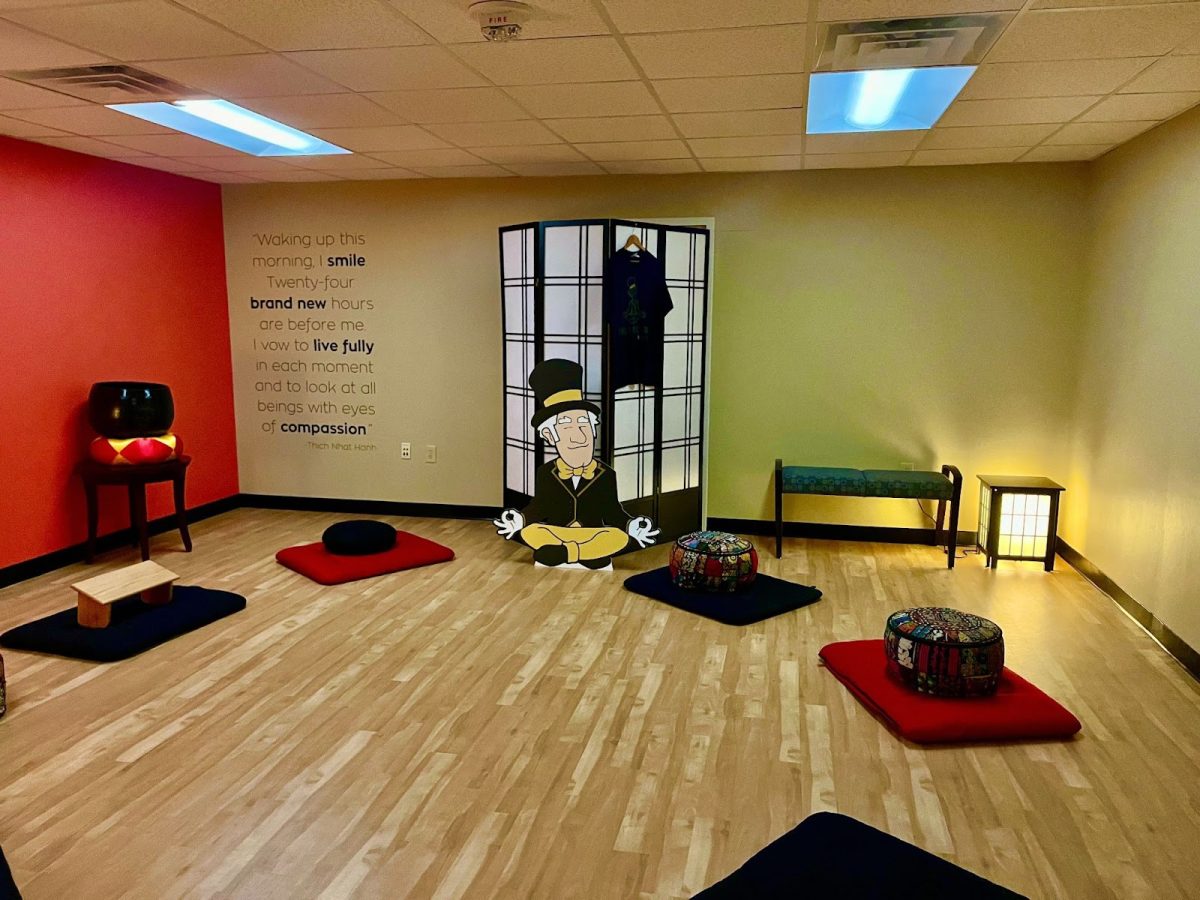The history of Reynolda Village, the Reynolda House Museum and Wake Forest itself are linked to the history of the Reynolds family.
Their story begins with a fortune made in the tobacco industry. Richard Joshua (RJ) Reynolds was a key player in the industrialization of the new South. Beginning in 1887, he grew his business steadily through the introduction of new tobacco blends and advertising.
Katharine Reynolds, RJ’s wife, took on numerous civic and social responsibilities in her time. She played a large role in educating and supporting the development of farming and agriculture in the region.
Provost Michele Gillespie discusses the legacy of Katharine Reynolds in her book, “Katharine and R.J. Reynolds: Partners of Fortune in the Making of the New South.”
“While Katharine masked almost all her actions in ladylike,” Gillespie said, “feminine trappings, she was a shrewd businesswoman at heart, more capable than most men of managing a hundred employees and making a killing on Wall Street.”
In December 1912, Katharine dedicated herself to the farm as acting superintendent. Serving as an early agricultural extension office, she tested new methods of crop rotation, soil analysis and animal husbandry. She also enacted her beliefs about social progress, planning churches, schools and modern housing for farmworkers and the Reynolda staff.
“The region saw Reynolda as an experiment station where local farmers came to learn about the latest techniques and agriculture,” Bari Helmes, director of Archives and Library at Reynolda House, said. “Katharine took an education role, teaching better ways of growing plants to help farmers diversify their agriculture.”
Katharine’s interests in the community varied from agriculture to education and health, which is reflected in the design of the estate. Given her college education and her own experiences with illness, battling with rheumatic fever for most of her life, Katharine stayed current on all things scientific. She was a member of the first generation to understand and accept germ theory.
During the planning of Reynolda farm and dairy, historians speculate that she frequently referenced “The Story of Germ Life” by Herbert William Conn, published in 1912. She knew that clean air, clean water and clean streets were essential in creating a germ-free, healthy environment. This knowledge is reflected in the design of her home.
“[Katharine] was an early advocate of germ theory,” Helmes said. “Reynolda, just the way the house was built, she was very much thinking of preventing illness.”
Katharine Reynolds became dedicated to expanding education initiatives in Forsyth County after the death of her husband. She believed that thriving communities began with access to quality education for all children.
“When RJ died in 1918, her interest in the farm seemed to die off and she turned to education,” Helmes said. “She essentially started a public school system at Reynolda.”
The success of the Reynolds company opened doors to economic development in the region and began a legacy of charity that continues to this day. Katharine was not the only Reynolds woman of her time to initiate positive change in the community. Her sister-in-law, Kate Bitting Reynolds, was also an influential member of the community, using her wealth to support the local community. Her area of concentration was healthcare.
“Kate and her husband Will invested in the first hospital for Black residents in Winston-Salem, which became known as Katie-B hospital,” Nora Ferrell, director of communications at Kate B. Reynolds Charitable Trust, said. “From what we understand, Kate and Katharine were wealthy women who tried to invest in the community.”
Katharine and Kate were ahead of their time, acting as catalysts for positive change. However, their fortune and influence were tainted by the estate’s racist history. Kate’s initial bequest of $5 million to establish the trust was inherited from the sale and labor of enslaved Black people.
“We also know that Kate and Katharine Reynolds, both of them, were very generous women during their time, but they were also women of their time,” Ferrell said. “Kate belonged to the Daughters of the Confederacy, so we know that her family-owned people who were enslaved and that was part of where her wealth came from.”
The Trust was established in 1947 to improve the lives of people with low incomes in Forsyth County. Inspired by Kate B. Reynolds’ dedication to healthcare equity, their vision is to create thriving communities by producing equitable health outcomes for all North Carolinians. Kate B. Reynolds Trust distributes more than $20 million in grants annually to improve the health and quality of life of residents of North Carolina.
According to Ferrell, the central mission of the Kate B. Reynolds Charitable Trust is interpreting the legacy of the Reynolds women in today’s context.
“For us, interpreting her mission on today’s terms means that we’re working for thriving communities, thriving residents, equitable health outcomes, and equitable access to healthcare,” Ferrell said.
The organization’s efforts to change systems that have historically held people back produce positive outcomes for residents of Forsyth County and North Carolina. In June 2023, the Trust awarded the Wake Forest School of Medicine a $1.5 million grant to address racial disparities in infant and maternal mortality rates across Forsyth County.
Katharine and Kate began legacies that have outlived them and can still be seen today. For Kate, the majority of her legacy is reflected in her trust. For Katharine, her legacy lies in her children and the story of her estate.
Correction, Feb. 19: A previous version of this article online and in print incorrectly identified Katherine Reynolds as a member of both the Daughters of the American Revolution and Daughters of the Confederacy. The Old Gold and Black could only confirm that Kate Bitting Reynolds was a member of these organizations.



